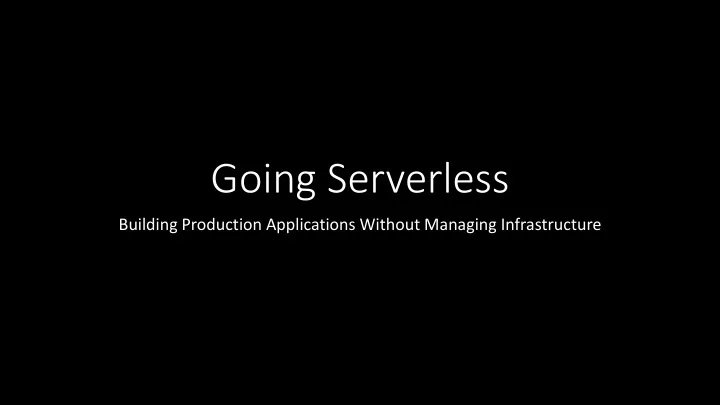

For those that can’t be automatically addressed…you need to be able to monitor your application.
Monitoring and Alerting
Unsurprisingly, with Serverless, both logging and alerting change.
Lambda logs go directly into Cloudwatch, but they are not easily followable, as they’re per function container.
Happily, Cloudwatch has pretty decent search and metrics tools.
You can set up alarms for these metrics, to post to SNS (and then send out SMS messages, or emails to alert people).
Do not use Cloudwatch for application metrics, however. Only the provided, technical ones.
Now that we’ve talked about the backend, what happens if an asynchronous lambda fails too many times?
Well, they’re retried (as mentioned before), but otherwise nothing by default. But you can set up dead letter queues.
Asynchronous lambdas can drop a failing event onto an SNS topic or SQS queue.
Cloudwatch logs can also be copied to S3 buckets, or pipe events into a Kinesis stream for processing in other tools, code, etc.
So we can build an app. We can monitor it. But what about the actual lifecycle of integration and deployment?
Let’s start with our lambdas.
Serverless - https://serverless.com/ Apex - http://apex.run/ Sparta - http://gosparta.io/ Zappa - https://github.com/Miserlou/Zappa Chalice - https://github.com/awslabs/chalice
Because these are CLI tools, you can leverage existing CI/CD tools fairly easily, but direct plugins are few.
Serverless (the framework), also bundles in Cloudformations. I can’t speak to the others.
If you maintain config in separate files, consider uploading them to an encrypted S3 bucket.
You can, instead, use environment variables as part of your lambdas. Serverless (the framework) also includes support for this.
Maintain separate environments for dev/stage/prod/etc. Consider separate environments for separate applications as well.
We’ve had success allowing devs access to a dev AWS account, which has AWS Config enabled.
We’ve also found integration tests, in an actual, deployed environment, to be the most useful.
So, we can design a solution, everything can run securely, we’ll know when things fail…what else?
Latency can be a problem…but not always. User experience matters, not latency numbers.
You can pre-warm functions by creating a scheduled event to invoke them periodically.
Use Cloudfront for caching. And more TLS options. And a layer of indirection. And for AWS Shield.
Be careful of caching error codes.
The API Gateway also has a separate caching mechanism. It’s not really worth it.
Rethink your API design.
Use Route53 + Certificate Manager liberally.
The API Gateway allows HTTP passthrough. If you want to move to Serverless, this is how to start.
Recommend
More recommend